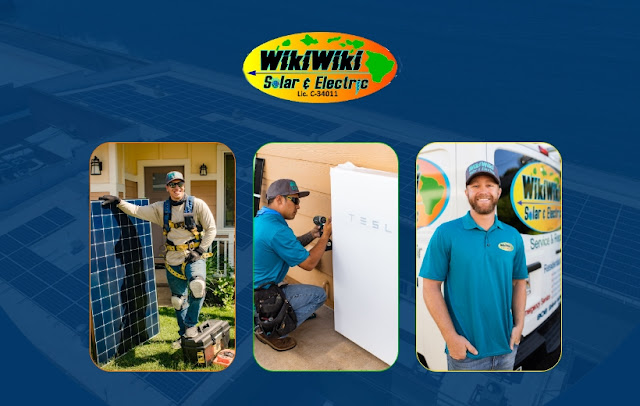What’s Included in a Maui Solar System Install?
If you've ever tried to buy a solar system, or even did some research to purchase one, you might have seen that the buying and installation process is sometimes quite murky, or other times drastically oversimplified.
Maybe a salesperson shared with you what you needed and it was just "panels and an inverter," or you saw advertising campaigns that made it seem like a plug-and-play installation, but once the real installation starts, all you encounter are surprise costs and missing parts.
It's unsettling, after all, you are making a big investment, and you ought to know what you're paying for and what you'll be putting up on your roof.
This guide makes it simple and provides you with very straightforward answers to what you get with the installation of a real Maui solar system on your island hale.
Let's start with Racking: The Most Overlooked Foundation
Racking preserves the roof. You will never see it being widely talked about, but racking is what holds the panels on the roof. If the racking system is not of high quality or is not chosen according to your roof type, the entire solar installation will be compromised.
This is even more important in Maui because exposure to salt air and wind makes robust mounting even more critical.
Inverters convert the DC power produced by the panels to the AC power your home requires. They come in many forms: string inverters, microinverters, power optimizers, etc.
Each has its advantages and disadvantages:
- String inverters: These are great for panels that have unshaded exposure to the sun. However, if any one of the panels underperforms, the performance of the entire string will degrade as well.
- Micro-inverters: One for every panel. They are perfect for homes with partial shade or roofs at different angles. You can rely on microinverters for better reliability and efficiency.
- Hybrid inverters: These are ideal if you are planning to integrate battery storage options. Additionally, they are useful for managing time-of-use rates.
The right inverter selection doesn’t just depend on the size of your
solar system; it depends on your home layout and usage patterns.
Batteries: Backup when you need it
Batteries can be useful because they allow flexibility and peace of mind, especially if you are worried about grid outages, want to avoid peak usage rates, or are considering going off-grid in the future.
Batteries like the Tesla Powerwall are dependable and compatible with many of the inverter options.
Monitoring Systems: Know What’s Working
Any good install includes some form of real-time monitoring - typically an app - so you can stay on top of production and spot issues sooner. Without it, you’re flying blind.
Permits, Inspections & More
A complete installation includes permit handling and utility approval. If your quote does not discuss these matters, you should question it.
At Wiki Wiki Solar, we take care of it all. That includes site plans, engineering review (if necessary), filing permits with Maui County, completing paperwork, and scheduling your final walkthrough.
Final Thought:
We have been installing complete systems, not just solar panels in Maui for families across the island. From roof evaluations to app-based monitoring, we handle everything ourselves. We're local experts, and we explain all components clearly before we ever pick up a tool. Call us at (808) 244-9454 when you're ready.




Comments
Post a Comment